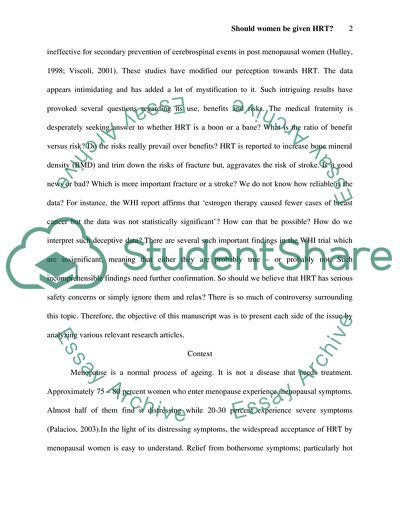Cite this document
(Should Women Be Given HRT Research Proposal Example | Topics and Well Written Essays - 3000 words, n.d.)
Should Women Be Given HRT Research Proposal Example | Topics and Well Written Essays - 3000 words. Retrieved from https://studentshare.org/gender-sexual-studies/1727979-should-women-be-given-hormone-replacement-therapy
Should Women Be Given HRT Research Proposal Example | Topics and Well Written Essays - 3000 words. Retrieved from https://studentshare.org/gender-sexual-studies/1727979-should-women-be-given-hormone-replacement-therapy
(Should Women Be Given HRT Research Proposal Example | Topics and Well Written Essays - 3000 Words)
Should Women Be Given HRT Research Proposal Example | Topics and Well Written Essays - 3000 Words. https://studentshare.org/gender-sexual-studies/1727979-should-women-be-given-hormone-replacement-therapy.
Should Women Be Given HRT Research Proposal Example | Topics and Well Written Essays - 3000 Words. https://studentshare.org/gender-sexual-studies/1727979-should-women-be-given-hormone-replacement-therapy.
“Should Women Be Given HRT Research Proposal Example | Topics and Well Written Essays - 3000 Words”, n.d. https://studentshare.org/gender-sexual-studies/1727979-should-women-be-given-hormone-replacement-therapy.


